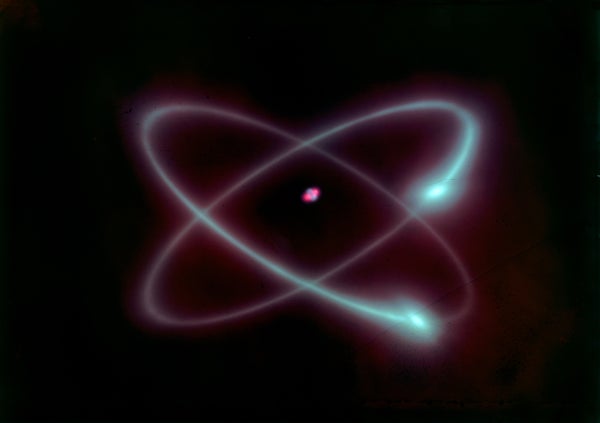How big is a helium atom? Or maybe the better question is: How small? After an intricate game of particle jockeying, physicists have now measured the radius of the helium nucleus five times more precisely than before.
Why do that? Well, atomic physicist Julian Krauth with the Max Planck Institute says these sorts of measurements can help refine our most basic ideas about how atoms work—like the theory of quantum electrodynamics.
“So in order to see where it might break down or where we could see a hint that there’s something which we’ve missed so far, we have to do very precise measurements.”
On supporting science journalism
If you're enjoying this article, consider supporting our award-winning journalism by subscribing. By purchasing a subscription you are helping to ensure the future of impactful stories about the discoveries and ideas shaping our world today.
But making those measurements was quite an undertaking. First, Krauth and his colleagues had to create a special flavor of helium, subbing a particle called a muon for the element’s usual two electrons. Krauth says just getting hold of the muons was tricky.
“We create high energetic protons from a proton accelerator, and we shoot these protons at a target made out of carbon. And in this collision process, we also create pions, which then decay into muons.”
The muons last for only two microseconds. So what happens next happens fast: They shoot the muons into a tube containing helium gas. After banging into enough helium there, a muon will slow down and lose energy—and eventually get trapped by a final helium atom. The muon kicks out both the atom’s electrons, and what’s left is the helium nucleus—which is two protons and two neutrons—and a muon. It’s called a muonic helium ion.
Next they bathe those ions in laser light, hoping to bump the muons up to a higher-energy but unstable state.
Catherine Klauss, an atomic physicist and science writer, compares that process to cleaning up a messy desk.
“So this would be like: if the atom were my desk, I have food all over my desk, cause I eat lunch at my desk.”
That’s a somewhat stable state because her desk often has leftovers on it, she says.
“If I were to clean it, I would be putting it into an unstable state because I can’t keep it clean very long. The equivalent of shining the laser light onto this atom is: I’m taking it from a food messy state and putting it into a clean state.”
Just as Klauss’s desk can’t stay clean very long, the muon almost immediately drops down to a more stable “messy” state again.
“But it can’t become food-messy again because it doesn’t have food. But it has papers and books. Those are going to spread out. That’s going to become now a paper-messy desk.”
So the muon starts in a semi-stable place—the food-messy desk—moves up to an unstable state—the clean desk—and then cascades down to a different stable ground state—the paper-messy desk.
As the muon drops down to this different ground state, an x-ray is emitted—alerting Krauth’s team that the transition has occurred. That, in turn, means that whatever frequency their laser light was at was exactly enough to kick the muon up from its initial energy level to the higher, unstable energy level.
“This difference, this energy difference between these two energy levels—from this we can extract how big, actually, the size of the nucleus is.”
Following this? The laser energy used to move the muon up to that unstable state can be used to calculate the radius of the helium nucleus, which is 1.67824 femtometers—one femtometer being one quadrillionth of a meter.
They report the results in the journal Nature. [Julian J. Krauth et al., Measuring the α-particle charge radius with muonic helium-4 ions]
This finding lines up nicely with the measurement of the helium nucleus derived through other means, though it’s five times more precise. And that agreement means that our best approximation of how the building blocks of the universe interact with each other—the Standard Model—is probably safe for now.
“So far, yes. But it only means that at the level of accuracy which we have right now, all is well. And that also means we have to measure more precisely and continue our search.”
If this study is any indication, getting even more precise measurements of helium will be a Herculean job.
—Christopher Intagliata
[The above text is a transcript of this podcast.]

